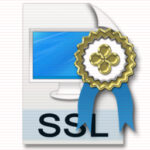
If you don’t have your own PKI and just want to perform some tests on a specific application or OS feature, you will probably need to generate a self-signed certificate. You can easily achieve this on Windows server without any additional tool or product. With the newer version of Windows server (since the version Windows server 2012), a new powershell cmdlet can generate this kind of certificate : New-SelfSignedCertificate
The command is quite simple:
New-SelfSignedCertificate -KeyUsage DigitalSignature,KeyEncipherment -KeyLength 2048 -KeyAlgorithm RSA -DnsName mywebserver.domain.local -Type SSLServerAuthentication -TextExtension @("2.5.29.37={text}1.3.6.1.5.5.7.3.1")
In this example, the self signed certificate will be created with the following options:
– Subject CN and SAN Dns Name: mywebserver.domain.local
– Public key: RSA (2048 bits)
– Key usage: DigitalSignature and KeyEncipherment
– Enhanced key usage: Server Authentication (1.3.6.1.5.5.7.3.1)
Before Windows server 2012 (Windows 2008), the powershell cmdlet New-SelfSignedCertificate is not available.
In this scenario, you can use instead the builtin cli tool called certreq.exe. First, you have to write a definition file we will called def.ini:
[Version]
Signature="$Windows NT$"
[NewRequest]
Subject = "CN=mywebserver.domain.local"
KeyLength = 2048
KeySpec = 1
KeyUsage = 0xA0
MachineKeySet = True
ProviderName = "Microsoft RSA SChannel Cryptographic Provider"
ProviderType = 12
SMIME = FALSE
RequestType = Cert
[Strings]
szOID_SUBJECT_ALT_NAME2 = "2.5.29.17"
szOID_ENHANCED_KEY_USAGE = "2.5.29.37"
szOID_PKIX_KP_SERVER_AUTH = "1.3.6.1.5.5.7.3.1"
[Extensions]
%szOID_SUBJECT_ALT_NAME2% = "{text}dns=mywebserver.domain.local"
%szOID_ENHANCED_KEY_USAGE% = "{text}%szOID_PKIX_KP_SERVER_AUTH%"
After that, launch the certreq.exe command:
certreq.exe -new def.ini my.req
In the command above, the file my.req is the certificate request file. The ini file contains the line : RequestType = Cert
With this line, the self-signed certificate will be created automatically. You can now find it by opening your Certificate MMC snap-in (Local Machine)
You will find below more information on:
– New-SelfSignedCertificate
– certreq.exe and inf structure
My Powershell script categories
- Active Directory
- Cluster
- Database
- Exchange
- Files and folders
- Hardware
- Network
- Operating System
- PKI
- SCCM
- Service and process
- Tips
- VMWare
